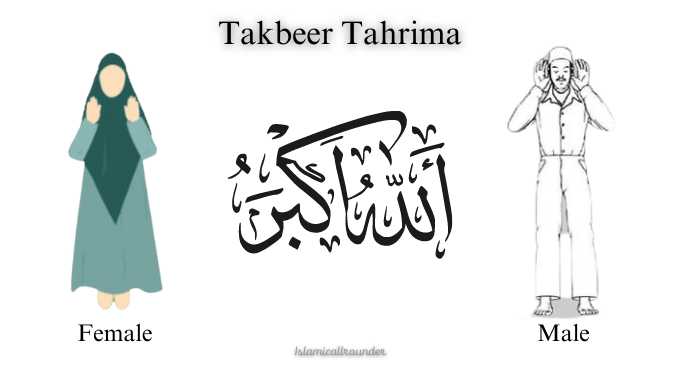Let’s see how to pray in Islam, step by step. For beginners, every Muslim, whether a man or a woman, is obligated to pray five times a day. Prayer is one of the five pillars of Islam.
Prayers are ordered many times in the Holy Quran. Prophet Muhammad taught us how to pray, so let us learn it so that we, too, can pray. If you are a Sunni Hanafi, then this method is very important, while people of other schools of thought may pray in their own way.
The Pre-Requisites (Sharait) of Salah
Five things must be fulfilled before learning the complete method of prayer. These are the conditions before starting the prayer. Only in their presence will the prayer be performed.
Those five conditions are as follows:
Purity
The first condition of prayer is “purity”; before entering the prayer, the person’s body, clothes and place of prayer should be clean.
Covering a particular part of the body
That is, the specific body parts of the praying person should be covered with clothes. For a man, this veil is the body from the navel to the knees, and for a woman, it is necessary to cover the whole body except the face, hands and feet.
Time for prayer
There is a time for the prayer to be performed; it cannot be that the time is for the Fajr prayer, and you should perform the Asr prayer.
Facing the Kaaba
During prayer, Muslims will turn their face and whole body towards Masjid al-Haram, i.e., Kaaba.
Doing the intention
Make an intention before starting the prayer. If you say it with your tongue, it is good; otherwise, it can be done only in your heart.
How to pray in Islam step by step
Now, let us know how to pray in Islam for both men and women. There are seven obligations in prayer, which complete the prayer only by being performed. If even one obligation is left, then the prayer will not be complete.
1; Takbeer Tahrima

First, make the intention of prayer and then start the prayer by saying Takbeer Tahrima. Takbeer Tahrima means raising both hands to the ears and saying Allahu Akbar.
The woman will only raise her hands to the shoulders.
2; Qiyam / Standing

The prayer begins with this Takbeer. Then, tie both hands under your navel, and the woman will place both her hands on her chest.
A man should place his right hand on top of his left under the navel so that the right palm is on the back of the left palm.
The woman will place the palm of her right hand on the back of her left hand on her chest.
3; Qira’at / Recitation of the Holy Quran
Now, first read Sana’a and then read Taawoz and Tasmiya together. After that, recite Surah Al-Fatiha and later recite any major verse or small Surah of the Holy Quran.

4; Ruku / Bowing

Ruku will be performed after Qira’at. Ruku means to bow down, holding the knees. It should be done by opening the fingers of both hands and holding both knees firmly.
And keep the elbows away from the stomach. Tasbih will be recited three times in Ruku “subhana rabbiyal Azeem.”
Stand up straight without tying your hands while saying “Sami allahu liman hamidah” from bowing. And then read Rabbana lakal hamd” This is called a Qoma.
5; Sujud / Prostration

After that, prostration is to be performed. To perform Sajdah, the worshiper should go into Sajdah by placing both hands on his knees while saying Allahu Akbar.
First, put the knees on the ground, then the hands, then the nose and forehead; the mouth should be between the two hands. Recite this Tasbeeh in three in Sajdah Subhana Rabbiyal A’la.
The command for prostration for a woman is that she should keep her arms close to her armpits, her stomach close to her thighs, her thighs close to her shins, and her elbows close to the ground.
In this way, one prostration will be completed. Now sit up—this is called Jalsa—and again perform the prostration as before. In this way, two prostrations will be completed.
This is one rakat of your prayer completed. In the same way, complete your remaining rak’ahs according to the number of rak’ahs of the prayer, and then at the end, sit down to read Qa’dah Akhirah, i.e. Attahiyat.
6; Qa’dah Akhirah / Final Sitting

In Qa’dah Akhirah, first recite Tashahhud, i.e., Attahiyat, then Durood-e-Ibrahimi, and then Dua like Rabbi Jalni Muqimas Salati.

7; Slam / finishing the salah (Khurooj Bi’sun’ihi)

After completing the Dua, turn the Salam to the right and then to the left.
Conclusion
If you wanted to pray using the Sunni Hanafi method, this article must have been very important. You would have learned a lot by looking at the images of the prayers. I pray to Allah, may Allah grant us all the opportunity to pray five times a day, Ameen
